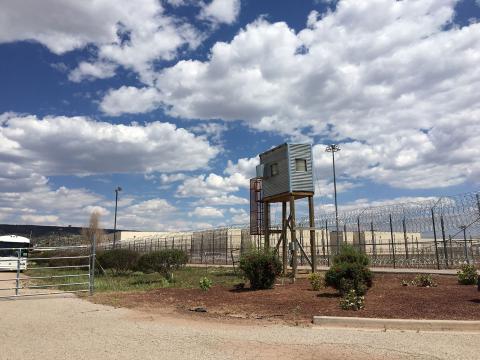Even as Congress voted last month to spend billions of tax dollars to extend the southern border wall and expand the immigration prison system, some members understood that Americans have a right to know how the Department of Homeland Security (DHS) is spending our money and seized the opportunity to implement new transparency and accountability requirements for the agency.
The report language accompanying the fiscal year 2018 omnibus appropriations bill places critical limits on DHS’s Immigration and Customs Enforcement (ICE) immigration detention spending authority. This week, NIJC and nine immigrant and civil rights organizations sent a letter to DHS Secretary Kirstjen Nielsen to highlight those limits and let her know we’ll be holding ICE accountable for its compliance.
ICE has a long history of fiscal mismanagement and lying to Congress. In fact, Congress reprimanded DHS in its last omnibus spending report for a “lack of fiscal discipline and cavalier management of funding for detention operations.” Appropriators have long signaled that ICE must improve its haphazard system of detention standards and inspections. Since 2009, Congress has required that ICE terminate contracts for any facility that failed two consecutive inspections.
The current state of the detention system illustrates how the agency’s continuing disregard for these oversight concerns results in rampant abuse. The agency has declined to fail any detention center twice in a row (and only a very small number have failed at all) since 2009, no matter how many people died or how many human rights abuses were publicly documented in a particular facility. According to the most recent publicly available data, only 63 percent of immigrants are held in detention centers that were last inspected under the most recent and robust detention standards (known as the 2011 Performance-Based National Detention Standards). Twenty-two percent of immigration jails are smaller detention centers which were permitted to conduct their own unregulated “self-assessment.” A close look at the inspections themselves reveals alarming evidence that they are sham assessments.
The new set of requirements laid out by Congress maintains the 2009 contract termination requirement, and adds mechanisms that should allow for increased public scrutiny of ICE’s operations and spending. ICE must now:
- Publicly post a full and detailed list every month of all detention facilities in use, including their average daily population and governing contract and standards
- Publicly post facility inspection reports within 60 days of the inspections
- Publicly post all reports regarding in-custody deaths within 30 days of any death
- Report weekly to the appropriations committees on the number of people taken into custody that week, and ensure that ICE “live within its means”
- Ensure adequate telephone access for individuals in detention, and provide a briefing to the appropriations committees on the feasibility, benefits, and costs of adopting some or all of the requirements of the settlement agreement in Lyon v. ICE, et al., which requires improved phone access in four California immigration jails
- Report semi-annually to the appropriations committees on the number of young people in the custody of the Office of Refugee Resettlement who are brought into ICE custody after their 18th birthdays, and provide a detailed reporting of the methodology the agency uses to ensure that these young people are placed in the “least restrictive setting available,” as federal law requires
- Report to the appropriations committees with at least 30 days’ notice any time ICE enters into any new or significantly modified detention contract or agreement that does not meet or exceed the 2011 Performance Based National Detention Standards, and provide a justification for such deviation from expectations
- Report to the appropriations committees by May 22, 2018, on its plans to achieve 100 percent compliance with the requirements of the Prison Rape Elimination Act
- Report to the DHS Office of the Inspector General by October 15, 2018, listing all grants and contracts awarded by any means other than full and open competition during fiscal years 2017 and 2018
- Provide timely and independent access to all facilities for non-governmental organizations seeking to provide legal representation, education, and programming, and/or monitoring and visitation
- Maintain the ICE Online Detainee Locator system, with information updated within 48 hours of an individual’s entry into detention and within 24 hours of a transfer
- Prioritize the use of Alternatives to Detention (ATDs), or forms of custody other than detention, including release on parole or bond
- Brief the appropriations committees on ICE’s exploration of better models for ATDs, including the Family Case Management Program and “know your rights” programming
- Ensure individuals in ICE custody have the opportunity to report incidents of family separation and verify the status, location and disposition of family members
- Ensure that ICE maintains its Parental Interests Directive and that ICE field officers are properly trained regarding its requirements and mechanisms to reunite family units
- If the agency proceeds with publicized plans to establish a new detention standards framework, that it develop those standards through a transparent process involving stakeholder input
With today’s letter, DHS is on notice that immigrant advocates throughout the country are prepared to hold ICE and Congress accountable to these new commitments to transparency.
Heidi Altman is director of policy and Tara Tidwell Cullen is director of communications at NIJC.


